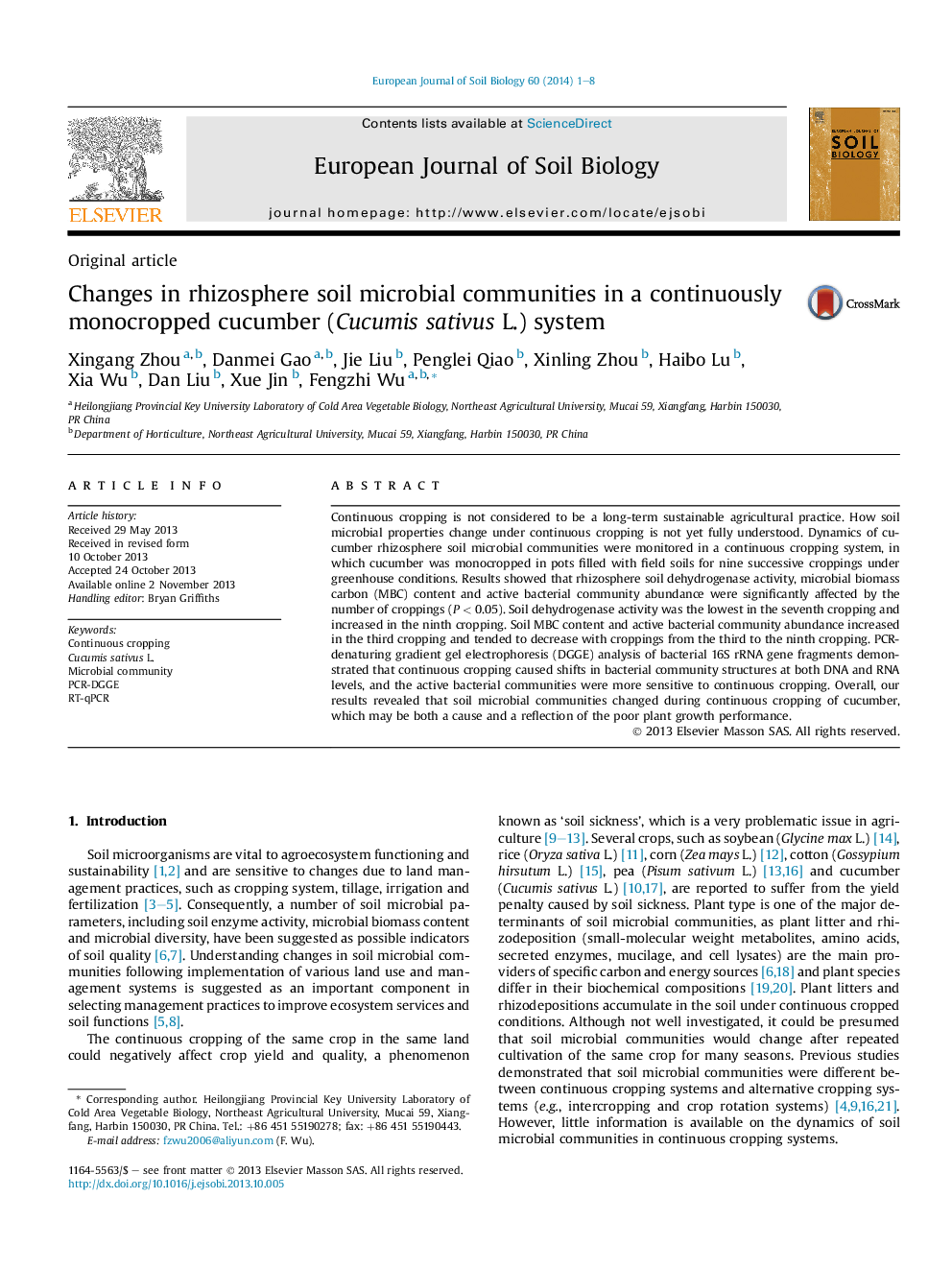| Article ID | Journal | Published Year | Pages | File Type |
|---|---|---|---|---|
| 4391894 | European Journal of Soil Biology | 2014 | 8 Pages |
•Continuous cropping of cucumber reduced soil microbial community activity and size.•Continuous cropping of cucumber changed soil bacterial microbial community structure.•Active soil bacterial communities were more sensitive to continuous cropping.
Continuous cropping is not considered to be a long-term sustainable agricultural practice. How soil microbial properties change under continuous cropping is not yet fully understood. Dynamics of cucumber rhizosphere soil microbial communities were monitored in a continuous cropping system, in which cucumber was monocropped in pots filled with field soils for nine successive croppings under greenhouse conditions. Results showed that rhizosphere soil dehydrogenase activity, microbial biomass carbon (MBC) content and active bacterial community abundance were significantly affected by the number of croppings (P < 0.05). Soil dehydrogenase activity was the lowest in the seventh cropping and increased in the ninth cropping. Soil MBC content and active bacterial community abundance increased in the third cropping and tended to decrease with croppings from the third to the ninth cropping. PCR-denaturing gradient gel electrophoresis (DGGE) analysis of bacterial 16S rRNA gene fragments demonstrated that continuous cropping caused shifts in bacterial community structures at both DNA and RNA levels, and the active bacterial communities were more sensitive to continuous cropping. Overall, our results revealed that soil microbial communities changed during continuous cropping of cucumber, which may be both a cause and a reflection of the poor plant growth performance.
